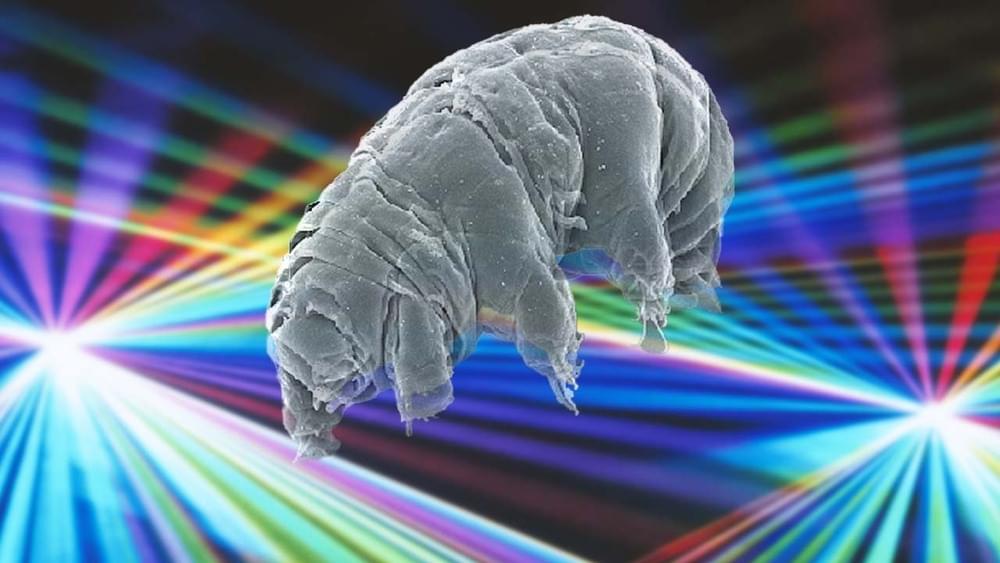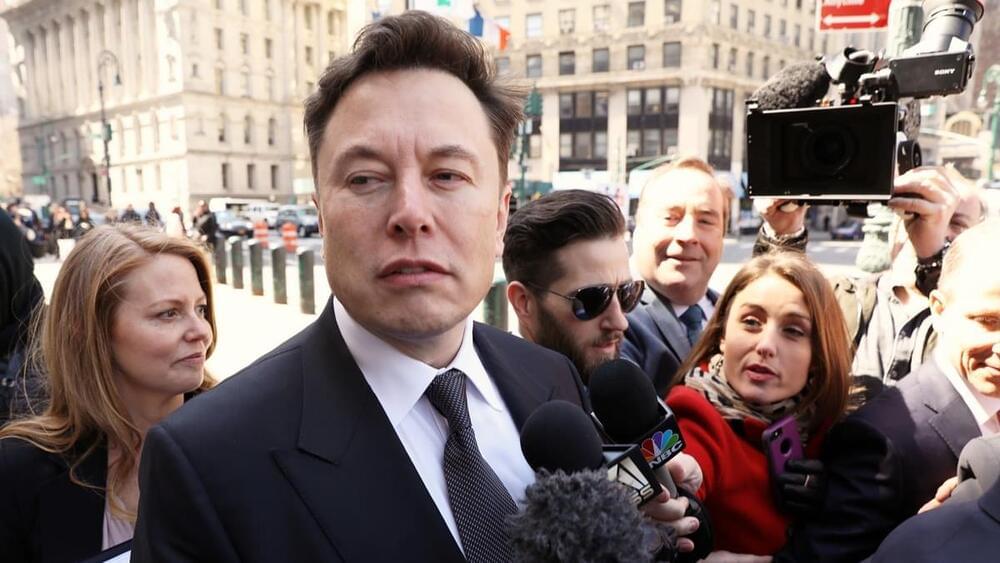Sometimes, good things come in small packages. Extremely tiny packages such as a microrobot that can pollinate fields of crops, help rescue people, and so on. Researchers at MIT (Massachusetts Institute of Technology) are already working on that and they’re making significant progress.
Get the latest international news and world events from around the world.

A look back at recent AI trends — and what 2022 might hold
2021 was an eventful year for AI. With the advent of new techniques, robust systems that can understand the relationships not only between words but words and photos, videos, and audio became possible. At the same time, policymakers — growing increasingly wary of AI’s potential harm — proposed rules aimed at mitigating the worst of AI’s effects, including discrimination.
Meanwhile, AI research labs — while signaling their adherence to “responsible AI” — rushed to commercialize their work, either under pressure from corporate parents or investors. But in a bright spot, organizations ranging from the U.S. National Institutes of Standards and Technology (NIST) to the United Nations released guidelines laying the groundwork for more explainable AI, emphasizing the need to move away from “black-box” systems in favor of those whose reasoning is transparent.
As for what 2022 might hold, the renewed focus on data engineering — designing the datasets used to train, test, and benchmark AI systems — that emerged in 2021 seems poised to remain strong. Innovations in AI accelerator hardware are another shoo-in for the year to come, as is a climb in the uptake of AI in the enterprise.

Tesla is leasing new land as part of its California expansion — for $1 per year
True to CEO Elon Musk’s word, Tesla is expanding its presence in California despite the company officially moving its headquarters to Texas. And amidst this California expansion, Tesla has leased nine acres of land to support its operations in Lathrop — all for a very reasonable price of $1 per year.
As noted in a Manteca Bulletin report, Tesla has been deliberately expanding its footprint in Lathrop since the company came to the city in 2014. During that time, Tesla was hoping to convert an old Mopar distribution center into a manufacturing facility for car parts. Tesla has since expanded its activities in Lathrop, with the company building an 870,000 square foot warehouse in the city. More recently, Tesla also broke ground on an upcoming “Megafactory” for its flagship battery storage unit, the Megapack.
With Tesla poised to employ an estimated 1,500 people working in two shifts at the “Megafactory,” the need for a space where the facility’s employees could park their vehicles while at work arose. With this in mind, the Lathrop City Council voted unanimously last week to lease nine acres of city-owned land to the electric vehicle maker. Tesla is expected to pay for all improvements, infrastructure, and maintenance for the new land, but this would likely be no issue.
This years biggest breakthroughs in longevity science!!
A year in review.
This video is sponsored by ResearchHub — https://www.researchhub.com/?ref=eleanorsheeky.
I’ve covered a lot of longevity science research this year so have summarised some of the key highlights here!!! Many breakthroughs & research I couldn’t cover — let me know what your favourite news this year was in the comments!!
Obviously, couldn’t go into as much detail for each topic, but you can find the full length videos in my playlist here: https://youtube.com/playlist?list=PLnLFbRYd2NGEP1VxVkW8-Hy9xix-Y7wur.
Find me on Twitter — https://twitter.com/EleanorSheekey.

Terraforming a Planet: Can Humans Stop Earth’s ‘Desertification’?
Could the sci-fi classic Dune offer solutions to climate change and desertification?
Today, planet Earth and civilization as we know it face a terrible crisis in the form of climate change. Thanks to the impact of urban sprawl, industrialization, commercial agriculture, and fossil-fuel emissions, we are experiencing a worldwide phenomenon of rising temperatures, rising sea levels, increased droughts and storms, wildfires, and “desertification.”
This last symptom refers to deserts expanding at their peripheries in response to diminished rainfall and hotter temperatures. Over time, this has the effect of destroying arable savannah and grasslands at the desert’s edge, which triggers drought, the destruction of farmland, and other vital infrastructure — not to mention the displacement of human populations.
Interestingly enough, this phenomenon also inspired one of the greatest works of science fiction ever: Frank Herbert’s Dune. Written in 1965, this novel remains one of the most influential works of modern literature, and not just within the science-fiction genre. Dune is one of the few works of science fiction that transcend genres, which is partly why it remains such a famous novel.
Full Story:

Scientists Are Working to Bring Back Dinosaur-Like Traits with Chicken
We thought that all the dinosaurs went extinct when an asteroid hit the earth some 65 million years ago until recently. Now we know that some of the dinosaur species, mostly avians, survived and become birds. Scientists are trying to tweak chicken DNA to produce atavistic, dinosaur-like, traits that are embedded in the genes of birds for years.
A research team led by Yale paleontologist and developmental biologist Bhart-Anjan S. Bhullar and Harvard developmental biologist Arhat Abzhanov conducted the first successful reversion of a bird’s skull features back in 2015. The team replicated ancestral molecular development to transform chicken embryos in a laboratory to turn its beak into a snout and palate configuration similar to that of small dinosaurs such as Velociraptor and Archaeopteryx.
“I wanted to know what the beak was skeletally, functionally and when this major transformation occurred from a normal vertebrate snout to the very unique structures used in birds,” Bhullar said.

The latest robots and technologies of the future: all the technology news for December in one issue!
You are on the PRO Robots channel and in this video we present to you the news digest for December 2021. New robots, the most realistic humanoid robot in the world, luxury flying cars of the future, xenobots — nanorobots that have learned to reproduce, nanochip for reprogramming living matter, drones with legs, universal robots, robotic cleaners, flying humanoids, Neuralink chip testing on people, new smart augmented reality glasses, the launch of the telescope, which will tell about the evolution of the universe, and much more in one release! All the most interesting high-tech news for December in one release. Watch the video till the end and write in comments, which news interested you most of all? And what areas of science and technology we should cover in the next issues?
More interesting and useful content:
✅ Elon Musk Innovation https://www.youtube.com/playlist?list=PLcyYMmVvkTuQ-8LO6CwGWbSCpWI2jJqCQ
✅Future Technologies Reviews https://www.youtube.com/playlist?list=PLcyYMmVvkTuTgL98RdT8-z-9a2CGeoBQF
✅ Technology news.
https://www.facebook.com/PRO.Robots.Info.
#prorobots #technology #roboticsnews.
PRO Robots is not just a channel about robots and future technologies, we are interested in science, technology, new technologies and robotics in all its manifestations, science news, technology news today, science and technology news 2021, so that in the future it will be possible to expand future release topics. Today, our vlog just talks about complex things, follows the tech news, makes reviews of exhibitions, conferences and events, where the main characters are best robots in the world! Subscribe to the channel, like the video and join us!
✅ Instagram: https://www.instagram.com/pro_robots.


Elon Musk rejects claims about Starlink satellites crowding the space
In a recent interview, Elon Musk rejected the claims about Starlink satellites crowding the space.
Couple of days ago, China complained to the UN that their space station had two close encounters with Starlink satellites and for safety reasons they implemented preventive collision avoidance control. China’s complain stated that the first incident occurred on 1st July and the second one was on 21st October 2021.
For your information, Starlink is the satellite internet constellation started by Elon Musk’s SpaceX and it aims to provide low cost high speed broadband internet service in every corner of the world, especially in rural places where cell services are not that advance. Currently there are over 1200+ Starlink satellites in space.